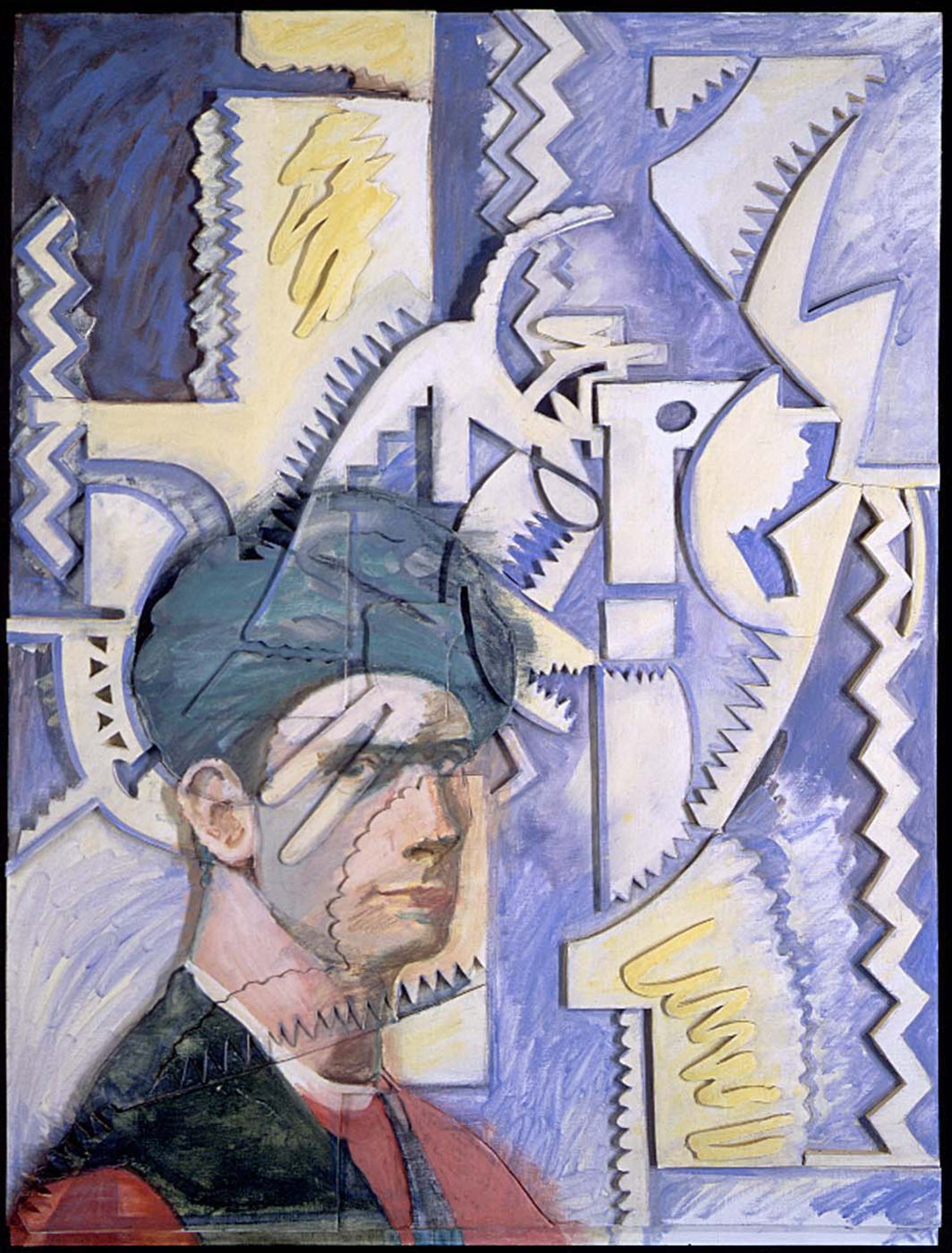
LARRY RIVERS
Painter, sculptor, poet, and musician Larry Rivers was an established figure in the NY School recognized for creating large paintings merging abstract and narrative elements, as in Washington Crossing the Delaware(1953), where the general leads his men through a space defined by murky oil washes and broad gestural brushwork.
Rivers studied in the late 1940s under Hans Hofmann, the artist often regarded as the grandfather of Abstract Expressionism. He never abandoned figuration, as many compositions included portraits of friends, family, his favorite doctors, text, and so on.
Rivers’ work is often compared to that of postmodern artists Jasper Johns and Robert Rauschenberg, as he is considered an important precursor to Pop Art.
Andy Warhol once said, “Larry’s painting style was unique, it wasn’t Abstract Expressionism and it wasn’t Pop, it fell into the period of inbetween —but his personality was Very Pop.”
Larry Rivers is considered to be the 'Godfather' of Pop Art, as he was one of the first artists to merge the non-figurative style of Ab Ex with figurative motifs and icons, plucked from Pop culture. Rivers's canvases included symbols and logos borrowed from sources such as Camel Cigarettes, Confederate flags, and Dutch Masters cigars - which, in an ironic twist, included a version of Rembrandt's Board Of The Drapers Guild on their packs. He also denied any interest in reflecting on mass culture through his work.
Larry lived and worked with studios both in NYC NY and Southampton NY. He continued working on various projects including works concentrating on fashion, right up until his death in 2002.
Rivers’s late works are highly personal and biographical, an artist who explored new subject matter with energy and passion. Rivers, always a veracious reader, was something of an autodidact. His habit of steeping himself in whatever subject caught his interest only grew with age: history, the Russian Revolution, plight of the Jews in Europe, film, art history. He jumped headlong into a subject, learning as much as he could, and then set out to create a series about it. His interest in history and art history, as examples, allowed the artist to connect with his past. Increasingly present in the work are references to memory and mortality. John Yau writes in the catalogue essay:
Rivers understood time’s devastations and in many of his late works he registered them with a firm but sensitive eye and hand. He explored the pleasure and sorrow of memory, even as he acknowledged time would eventually erase them. He understood that the present buried the past, and that it was up to us to remember the Holocaust for the next generation, however difficult and painful that might be. This is what we have to recognize about Rivers’s late work. He wasn’t thinking about his reputation, and whether or not he would be forgotten. He was chronicling what it meant to be an aged man living in time—both personal and historical—and all that it stirred up in him."
Rivers’ work is in the collections of NYC museums, The MOMA, The Metropolitan Museum of Art, The Whitney, The Guggenheim, also in The National Gallery of Art in Washington D.C. He died at 79 years of age in his home in Southampton NY.
The Vorticist Edward Wadsworth and His Painting 1991
Oil on Canvas Mounted on Sculpted Foamboard
55 1⁄2” x 41 5/8” x 2 3⁄4”
Blue Hue - Fashion Series /1999 / 73 x 76
Larry Rivers An American Master - ART/new york video from ca. 1986 is pure kitsch and pure history — Helen Harrison speaking on his work, director of the Pollock Krasner house in Springs, NY; David Robinson, director of Marlborough Gallery in NY and art historian, Sam Hunter.
Rivers' painting is often visionary, inclusive and prophetic of styles and the movements that follow. He is a maverick, an iconoclast and a true bohemian. They called him the Godfather of Pop.
Larry lived on 14th Street in a very large loft and played the sax with fellow artist, musician, Howard Kanowitz, and others such as Garland Jeffries and Howard Brofsky, stepping in. The 13th Street Band. They played Downtown at the local scene spots — Franklin Furnace, the Continental, Mudd Club / they even played a gig at Studio 54….In Southampton, Larry would play his sax with fellow artist, Phoebe Legere at Bobby Van’s restaurant, watering hole to Truman Capote and many other ridiculously fun, intelligent artists and writers. He and Kurt Vonnegut were one of the first to be actively involved in the yearly
Artists and Writers softball game, a tradition, held each summer in East Hampton, NY
Bending Forward, Fashion Series, 1989




